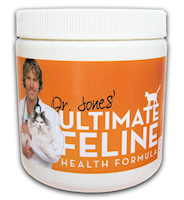So what do you do to prevent and treat dog ticks naturally? First you’ve got to regularly check for ticks on your dog, especially after walking in the dense grasses, and during the peak times of infestation ( in the spring). Carefully look in the cracks and crevices, such as behind your dog’s ears. If you find a tick, you want to remove it immediately. Use tweezers, and grab the tick at the mouth parts where it is attached to your dog. Pull slowly, but firmly straight out, not twisting it, and if some of the skin comes off, that is fine. Clean the area with a disinfectant scrub ( such as chlorhexidine or black tea), and dispose of the tick being careful that you don’t touch it.
Shampooing your dog with some of the holistic anti-tick shampoos can eliminate ticks. You need to look for shampoos that contain these ingredients: Neem oil, Eucalyptus and Cedarwood oil. Ticks are extremely resistant to most products, but these essential oils appear to have some effect on preventing their life cycle.
A relatively non-toxic natural substance, has been shown to be effective in the eradication of ticks in dogs is cedarwood oil spray. I encourage you to be cautious in spraying excessive of essential oils on your small dogs. It is best to only lightly mist them; following that use a flea comb to spreading the spray. A cedarwood oil spray that I have had success with tick treatment in dogs is: Triple Sure Natural Flea and Tick Spray made by Natural Wonder Products.


Keeping your grass short, and reducing the amount of dense vegetation around your home is one of the easier, and simple ways to lower your dog’s chances of getting ticks. Ticks prefer tall grasses, and low overhanging bushes while waiting for their next host to feed on. Regularly remove fallen leaves (leaf litter), and create a natural buffer by putting down wood chips between your lawn and the wooded areas to keep ticks away. Lastly consider discourging deer and mice from coming into your yard, as the deer tick is the carrier of lyme disease; motion controlled water sprinklers can be very effective.
Then there are the use of natural topical outside, such as Diatomaceous earth- it consists of the skeletons of microscopic algae. Spread the diatomaceous earth at the edge of your lawn, acting as another natural barrier preventing tick infestation.
Ticks are a rather difficult external parasite to prevent and treat, but there are many things that you as an involved dog owner can do. There are a few very potent conventional tick medications, but concerns of side effects of these has lead many a dog owner to try some of the holistic options. These include common sense environmental ones, such as keeping the dense vegetation down, and maintaining a natural ‘tick’ barrier with wood chips. Lastly there are the specific shampoos, such as Neem oil, along with effective sprays containing cedarwood oil.
I find adding organic apple cider vinegar to my pets' water discourages fleas and ticks.
http://www.flintriverranchstore.com
http://www.nuvet.com/66819
I find adding organic apple cider vinegar to my pets' water discourages fleas and ticks.
http://www.flintriverranchstore.com
http://www.nuvet.com/66819


